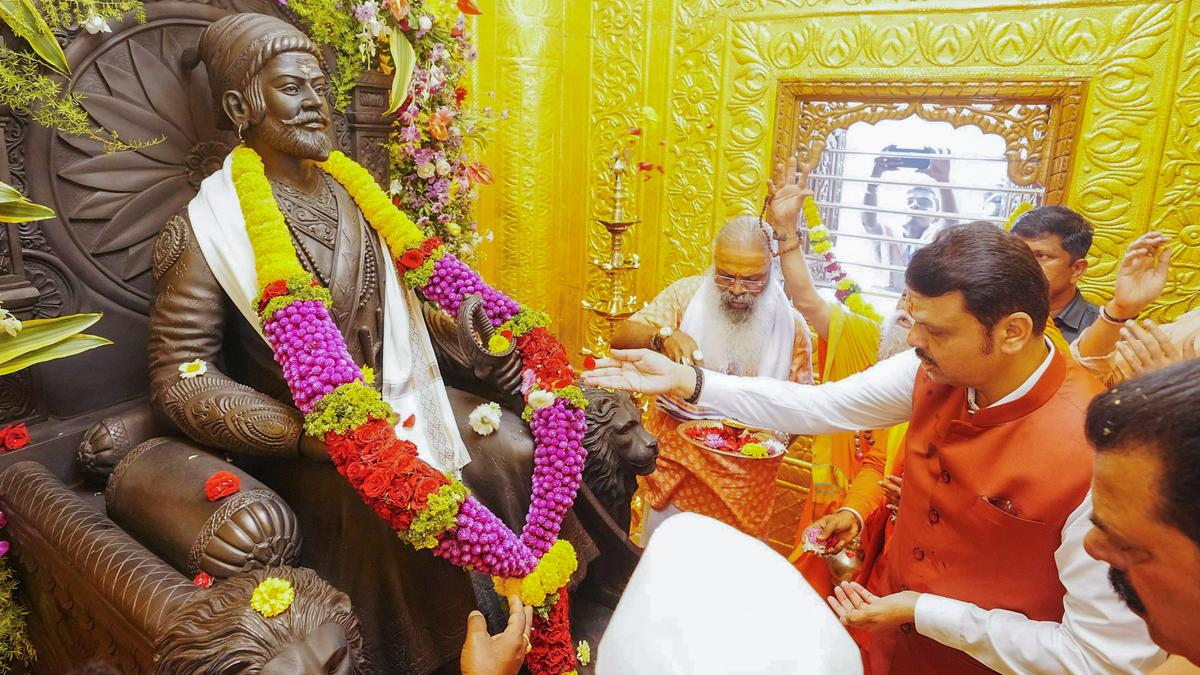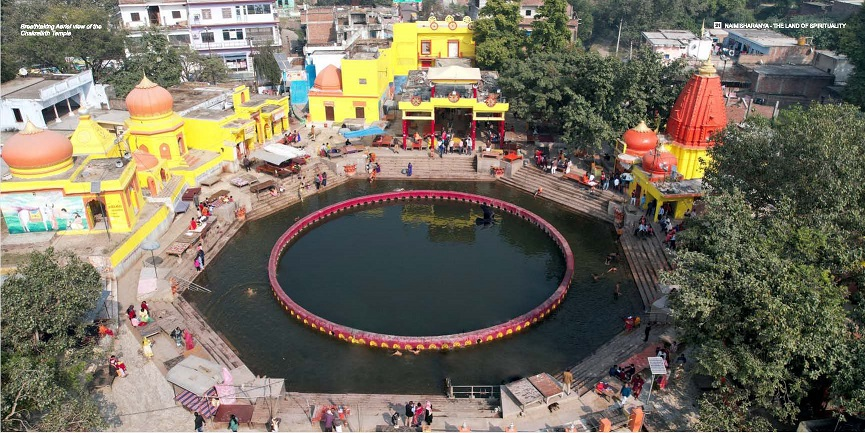West Bengal Switch to Hindi
Kantha Fair in West Bengal
Why in News?
Coal India Limited (CIL), under the Ministry of Coal, organized a Kantha Fair showcasing the embroidery work of women artisans from West Bengal.
- These artisans benefited from the Kantha Skill Centre built under CIL.
Key Points
- Celebrating Women’s Achievements:
- CIL and its subsidiaries recognized and celebrated women’s achievements by organizing various programs across their offices and operational areas.
- As the lead company, Central Coalfields Ltd (CCL), Ranchi, Jharkhand, hosted a mega event showcasing tribal art, women-led businesses, and technical skills.
- CIL’s Commitment to Sustainable Livelihoods:
- It was emphasized that CIL and its subsidiaries are dedicated to implementing impactful programs that empower women through skill development, entrepreneurship, and Corporate Social Responsibility (CSR) initiatives.
- Promoting Self-Reliance Among Women:
- CIL’s commitment to uplifting marginalized communities and fostering economic and social opportunities for women, contributing to national progress while preserving artistic traditions was highlighted.
Coal India Limited
- About: CIL is a state-owned coal mining corporation in India, responsible for producing and managing coal resources in the country.
- It was 1975 and is the world's largest coal producer.
- Organisational Structure: CIL is classified as a 'Maharatna' public sector enterprise and operates through 8 subsidiaries like Eastern Coalfields Limited (ECL), Bharat Coking Coal Limited (BCCL).
- Mahanadi Coalfields Limited (MCL) is CIL’s largest coal-producing subsidiary.
- Strategic Importance: Over half of India’s installed power capacity is coal-based, with CIL supplying around 78% of the country’s total coal production.
- Coal also accounts for 40% of India’s primary commercial energy needs.
- Mining Capacity: Across eight Indian states, CIL operates in 84 mining areas, and manages a total of 313 active mines.


Maharashtra Switch to Hindi
Industry Dialogue on PRIP Scheme
Why in News?
The Department of Pharmaceuticals, Government of India, hosted an Industry Dialogue in Mumbai to promote research and innovation under the Pharma-MedTech Sector (PRIP) Scheme.
Key Points
- Key Discussions & Participation:
- The event provided a platform for industry leaders, associations, and research institutes from Indian Council of Medical Research (ICMR), Council of Scientific & Industrial Research (CSIR), and National Institutes of Pharmaceutical Education and Research (NIPERs).
- Discussions focused on strengthening industry-academia linkages, fostering collaboration, and leveraging government initiatives to accelerate R&D and commercialization of innovative solutions in pharmaceuticals and medical technology.
- Government Initiatives:
- PRIP Scheme: Detailed insights on its role in supporting research and innovation.
- ICMR Initiatives:
- PATENT MITRA – Support for patent filing.
- MEDTECH MITRA – Assistance in the innovation journey and clinical trials.
- INTENT – Facilitation of research and development efforts.
- Government’s Vision for Pharma-MedTech:
- Secretary, Department of Pharmaceuticals emphasized:
- The importance of futuristic products and affordable healthcare solutions.
- The transformative role of data-driven markets in shaping Pharma-MedTech R&D.
- India’s unique advantage in precision and personalized medicine due to its diverse gene pool and large population.
- The PRIP Scheme’s role in supporting cost-effective and innovative healthcare solutions for global impact.
- Secretary, Department of Pharmaceuticals emphasized:
Indian Council of Medical Research
- Indian Council of Medical Research (ICMR) is the apex body in India for the formulation, coordination and promotion of biomedical research.
- Its mandate is to conduct, coordinate and implement medical research for the benefit of the Society; translating medical innovations into products/processes and introducing them into the public health system.
- It is funded by the Government of India through the Department of Health Research, Ministry of Health & Family Welfare.
Council of Scientific and Industrial Research (CSIR)
- About: CSIR is the largest research and development (R&D) organisation in India. CSIR has a pan-India presence and has a dynamic network of 37 national laboratories, 39 outreach centres, 3 Innovation Complexes and 5 units.
- Established: September 1942
- Headquarters: New Delhi
- It is funded by the Ministry of Science and Technology and it operates as an autonomous body through the Societies Registration Act, 1860.
- CSIR covers a wide spectrum of streams – from radio and space physics, oceanography, geophysics, chemicals, drugs, genomics, biotechnology and nanotechnology to mining, aeronautics, instrumentation, environmental engineering and information technology.
- It provides significant technological intervention in many areas with regard to societal efforts which include the environment, health, drinking water, food, housing, energy, and farm and non-farm sectors.


Maharashtra Switch to Hindi
First Temple of Chhatrapati Shivaji Maharaj
Why in News?
The Chief Minister of Maharashtra inaugurated Chhatrapati Shivaji Maharaj's first temple in Bhiwandi, Thane district, to mark the Maratha warrior king’s birth anniversary according to the Hindu lunar calendar.
Key Points
- National Temple:
- The CM referred to the temple as a “national temple”, emphasizing its inspirational value.
- He highlighted that the temple honours Shivaji Maharaj’s legacy, allowing devotees to witness the glory of the Maratha king.
- Shivaji Maharaj fought battles for God, country, and faith, ensuring the right to worship Ishta Devas (personal Gods).
- Structure & Design:
- The first grand temple of Chhatrapati Shivaji Maharaj in Maharashtra spans four acres in the Marade Pada region, Thane district.
- Architect Vijaykumar Patil designed the temple’s structure.
- Sculptor Arun Yogiraj, who also created the Ram temple idol in Ayodhya, carved the 6.5-feet idol of Shivaji Maharaj for this temple.
- Efforts for UNESCO Recognition & Memorial in Agra:
- The Maharashtra government has approached UNESCO to recognize 12 forts associated with Shivaji Maharaj under the Maratha Military Landscape of India.
- These 12 forts are:
- Maharashtra: Lohagad, Salher, Raigad, Pratapgad, Shivneri, Suvarnadurg, Vijaydurg, Sindhudurg, Panhala, Khanderi Fort.
- Tamil Nadu: Gingee Fort.
- The State has also sought permission from Uttar Pradesh to build a memorial in Agra, marking Shivaji Maharaj’s escape from Aurangzeb’s captivity in 1666.
Chhatrapati Shivaji Maharaj
- Birth:
- He was born on 19th February, 1630 at Shivneri Fort in District Pune in the present-day state of Maharashtra.
- He was born to Shahaji Bhonsle, a Maratha general who held the jagirs of Pune and Supe under the Bijapur Sultanate and Jijabai, a pious woman whose religious qualities had a profound influence on him.
- Early Life:
- He displayed his military zeal for the first time in 1645 when as a teenager, he successfully got control of the Torna Fort which was under Bijapur.
- He also acquired the Kondana Fort. Both these forts were under Adil Shah of Bijapur.
- Granted Title:
- He was crowned as the king of the Marathas on 6th June , 1674, at Raigad.
- He took on the titles of Chhatrapati, Shakakarta, Kshatriya Kulavantas and Haindava Dharmodhhaarak.
- The Maratha Kingdom founded by Shivaji grew larger over time and became the dominant Indian power in the early 18th century.
- Death:
- He died on 3rd April 1680.


Chhattisgarh Switch to Hindi
Kanger Valley National Park UNESCO Recognition
Why in News?
United Nations Educational, Scientific and Cultural Organization (UNESCO) has added Kanger Valley National Park (KVNP) in Chhattisgarh's Bastar region to its Tentative List of World Heritage Sites under the Natural Heritage category.
Key Points
- UNESCO Tentative List Inclusion:
- The state Chief Minister expressed pride in this achievement, highlighting KVNP’s role in biodiversity conservation, tribal culture promotion, and eco-tourism.
- He emphasized that global recognition would boost tourism and bring prestige to Bastar and Chhattisgarh.
- UNESCO Criteria Fulfillment:
- KVNP qualified for the UNESCO listing based on three critical criteria:
- Natural beauty – landscapes, waterfalls, and valleys.
- Geological significance – Unique rock formations and limestone caves.
- Biodiversity – Rich flora and fauna, including rare species.
- KVNP qualified for the UNESCO listing based on three critical criteria:
- Proposal Submission Process:
- The park’s management submitted a proposal to the Archaeological Survey of India (ASI) under the Ministry of Culture, leading to UNESCO’s selection of KVNP for the tentative list.
Kanger Valley National Park
- Location:
- Situated in Jagdalpur, Bastar district, Chhattisgarh.
- It lies on the banks of the Kholaba River, a tributary of the Godavari River.
- It is named after the Kanger River, which flows through its length.
- It was declared a national park in 1982.
- The entire park is a core area with no buffer zone.
- Topography:
- It features diverse landscapes, including plateaus, valleys, steep slopes, and stream courses.
- It houses three famous limestone caves—Kutumbasar, Kailash, and Dandak—known for stalactites and stalagmites.
- Stalactite is an icicle-shaped formation that hangs from the ceiling of a cave and is produced by the precipitation of minerals from water dripping through the cave ceiling. Most stalactites have pointed tips.
- Stalagmite is an upward-growing mound of mineral deposits that have precipitated from water dripping onto the floor of a cave. Most stalagmites have rounded or flattened tips.
- It hosts Tirathgarh Waterfall, a major tourist attraction and is home to a significant tribal population.
- It contains underground limestone caves with dripstone and flowstone formations.
- Flora:
- Characterized by mixed humid deciduous forests.
- Abundant tree species include Sal, Saugaun, Teak, and Bamboo.
- Fauna:
- Major mammals: Tigers, Mouse Deer, Leopards, Wildcat, Sambar, Chital, Barking Deer, Langurs, Jackals, Rhesus Macaque, and Flying Squirrel.
- Aerial fauna: Common Hill Myna, Red Jungle Fowl, Spotted Owlet, Racket-Tailed Drongos, and Parrots.
UNESCO’s Tentative List
- UNESCO’s tentative list is an inventory of properties which each state party intends to consider for nomination.
- As per Operational Guidelines, 2019 of UNESCO, it is mandatory to put any monument/site on the tentative list for one year before it is considered for the final nomination dossier.
- Once the nomination is done, it is sent to the World Heritage Centre (WHC).


Rajasthan Switch to Hindi
Patli River
Why in News?
On 13th March 2025, the Education Minister of Rajasthan inaugurated the restoration work of Patli River in Kota .
Key Points
- About Patali River:
- Patli River is a 37 kilometer long river which originates from Mandsaur district of Madhya Pradesh and flows through Neemthur hill and enters Ramganj Mandi (Rajasthan) , where it has a flow area of about 12 kilometers .
- Ultimately this river merges with the Aahu river of Suket .
- Restoration of the river:
- The extinct Patli river will be revived at a cost of Rs 5 crore.
- Under this project, debris, glass, stone pieces and other waste materials deposited in the river sediment will be removed.
- Its width will be around 40 metres and its banks will be strengthened.
- Ghats will be constructed by selecting suitable places on the river banks and at some places beds will also be constructed for water filling.
- Importance:
- Due to the restoration of the river, irrigation facilities will be available to about 7050 hectares of agricultural land in 40 villages .
- Natural water flow will be restored.
- This will reduce the problem of waterlogging in the surrounding fields
- Land erosion and soil degradation can be controlled.
Kota
- About:
- It was named Kota after the name of its initial ruler Kothia Bhil .
- It is also known as Kanpur of Rajasthan, Industrial City and Educational City .
- This city is situated on the banks of the Chambal River.
- Jawahar Sagar Dam (Chambal River) and Harishchandra Sagar (Kali Sindh River) are located in Kota
- It is the third largest city of Rajasthan after Jaipur and Jodhpur .
- Literacy:
- According to the 2011 census, it is the district with the highest literacy rate (76.6%) in Rajasthan.
- Major places of visit
- Mukundwara Hills - Located between Kota and Jhalawar .
- Vibhishana Temple - The only Vibhishana temple in India , located in Kaithun.
- Mathuradhish Temple- Main pilgrimage site of Vaishnav sect .
- Shiva Temple of Kansua – Built in the 8th century, here the first ray of the sun falls directly on the Shivalinga.
- Geparnath Shivalaya- It is a Gupta period Shiva temple.
- Snake Park- It is the only snake park in Rajasthan .


Madhya Pradesh Switch to Hindi
Madhya Pradesh Budget 2025-26
Why in News?
On 12th March 2025, Madhya Pradesh Deputy Chief Minister and Finance Minister presented a budget of Rs 4,21,032 crore for the financial year 2025-26 in the Assembly .
Key Points
- About the budget:
- This budget is 15% more than the estimate of Rs 3,65,067 crore for the financial year 2024-25.
- The government aims to increase the budget of Madhya Pradesh to Rs 2 trillion by the year 2047 .
- In this budget, neither any new tax has been imposed nor any existing tax has been increased.
- Estimated revenue receipts: Rs 2.90 lakh crore
- State's own tax revenue : Rs 1.09 lakh crore
- Grants-in-aid received from the Centre: Rs 48,661 crore
- 31% increase in capital expenditure
- Estimated fiscal deficit : 4 per cent of gross state domestic product (GSDP)
- Key provisions:
- In the budget, special focus was given on points like Garib Kalyan Mission, Yuva Shakti Mission, Prosperous Farmer Prosperous State and Empowered Women Empowered State.
- For agriculture and farmers:
- The target is to expand irrigation facilities in the state to reach 100 lakh hectares by the year 2029 .
- Atal Krishi Jyoti Yojana – Rs 13,909 crore
- Prime Minister Krishak Mitra Surya Yojana – Rs 447 crore
- Chief Minister Kisan Kalyan Yojana – Rs 5,220 crore
- Pradhan Mantri Fasal Bima Yojana – Rs 2,001 crore
- Crop procurement bonus payment – Rs 1,000 crore
- Chief Minister's Farmer Development Scheme – Rs. 850 crore
- Animal husbandry and cow breeding – Rs 505 crore
- Dairy Development Scheme – Rs 50 crore
- For the poor and welfare schemes:
- Atal Griha Jyoti Yojana – Rs 7,132 crore
- Free electricity on agricultural pump and light connections – Rs 5,299 crore
- Chief Minister Jankalyan (Sambal) Scheme – Rs 700 crore
- Pradhan Mantri Jan Arogya Yojana (Ayushman Bharat) – Rs 1,277 crore
- PM Janman Yojana (Housing) – Rs 1,100 crore
- Chief Minister Vrindavan Village Scheme – Rs. 100 crore
- 17,135 crore rupees for Jal Jeevan Mission.
- For the upliftment of women:
- Under the Ladli Behna Yojana the beneficiaries will be linked with Atal Pension Yojana .
- Provision of Rs 18,669 crore in the budget for Ladli Behna Yojana.
- Proposal for construction of hostel scheme for working women .
- Hostels with 5,772 beds will be built in 4 major industrial cities of the state
- Under the food grant to free the Baiga, Bharia and Saharia families from malnutrition , Rs 1500 will be transferred into the accounts of 2.20 lakh women.
- Shramik Seva Maternity Assistance, Bicycles for Girl Students, Chief Minister Scooty Scheme: Provision of Rs 26,797 crore.
- Provision of Rs 215 crore for the scheme of providing bicycles to girl students .
- Under the Ladli Behna Yojana the beneficiaries will be linked with Atal Pension Yojana .
- For infrastructure development:
- Construction of 1 lakh kilometre of roads and 500 railway over bridges (ROBs) and flyovers in the next five years .
- Target to build 3500 kilometers of new roads and 70 bridges in the year 2025.
- Launch of 'Reconstruction of Damaged Bridges' scheme under Pradhan Mantri Gram Sadak Yojana .
- Provision of Rs 100 crore to facilitate traffic and improve connectivity of villages .
- Provision of Rs 100 crore for Chief Minister Majra Tola Road Scheme .
- Electric buses will be run in urban areas .
- For education and health:
- 50 tribal students will be sent abroad for higher education .
- 400 seats of MBBS and 255 seats of PG Medical College will be increased.
- 11 new Ayurvedic colleges will be established.
- A digital university will be established.
- MIT (Medical/Technology Institute) will be established.
- 22 new ITI colleges will be opened.
- Provision of Rs 23,533 crore for health sector .
- Tourism and Cultural Development:
- Dinosaur Fossil Centre will be established in Dhar .
- Construction of 14 monuments at a cost of Rs 507 crore .
- Creation of 'Lok' in Omkareshwar .
- Rs 1,160 crore for religion, culture and tourism .
- 30 crores for Ram Van Path Yatra and 10 crores for Shri Krishna Pathey .
- Urban and Rural Development:
- Rs 18,715 crore for urban development .
- Rs 19,050 crore for panchayat and rural development .
- Rs 2,000 crore for Simhastha 2028 .
- Rs 100 crore for Chief Minister Vrindavan Gram Yojana .


Uttar Pradesh Switch to Hindi
Memorial of Freedom Fighter Chittu Pandey
Why in News?
The Uttar Pradesh government announced plans to build a memorial in honour of freedom fighter Chittu Pandey in Ballia district.
Key Points
- About Chittu Pandey:
- He was a great freedom fighter and revolutionary who played an important role in the Quit India Movement of 1942 .
- Due to his bravery and leadership skills he is known as "Lion of Ballia" .
- Birth:
- Chittu Pandey was born on 10 May 1895 in Rattuchak village of Ballia district of Uttar Pradesh .
- Establishment of independent government:
- On August 19, 1942, under Chittu Pandey's leadership, the revolutionaries of Ballia ousted British officials, proclaimed Ballia’s independence, and established a temporary national government.
- Chittu Pandey assumed charge as the interim administrator (chief) of this short-lived administration.
- This government succeeded in handing over the power to the Collector and releasing all the arrested Congress leaders .
- However, after a few days the British army again captured Ballia and arrested Chittu Pandey and other revolutionaries .
- On August 19, 1942, under Chittu Pandey's leadership, the revolutionaries of Ballia ousted British officials, proclaimed Ballia’s independence, and established a temporary national government.
- Demise:
- He died on 6 December 1946.
Quit India Movement
- About:
- On 8th August 1942, Mahatma Gandhi called for an end to British rule and launched the Quit India Movement at the All-India Congress Committee session in Mumbai.
- Gandhi gave the call of "Do or Die " in his speech at the Gwalia Tank Maidan, now known as August Kranti Maidan.
- Popularly known as the 'Grand Old Lady' of the freedom movement, Aruna Asaf Ali is known for hoisting the Indian flag at Mumbai's Gowalia Tank grounds during the Quit India Movement .
- The slogan 'Quit India ' was coined by Yusuf Meherli, a socialist and trade unionist who also served as the mayor of Mumbai.
- Reasons for movement:
- The immediate cause of the movement was the failure of the Cripps Mission.
- The British concept of unconditional support from India to the British in the Second World War was not accepted by the Indian National Congress.
- Anti-British sentiments and demands for complete independence had gained popularity among the Indian masses.
- Success of the movement:
- Emergence of Future Leaders:
- Leaders like Ram Manohar Lohia, JP Narayan, Aruna Asaf Ali, Biju Patnaik, Sucheta Kripalani etc. carried out underground activities who later emerged as prominent leaders.
- Participation of women:
- Women participated enthusiastically in the movement. Women leaders like Usha Mehta helped set up an underground radio station that created awareness about the movement.
- Rise of Nationalism:
- The Quit India Movement brought forth a unique feeling of unity and brotherhood in the country. Many students left schools and colleges and people left their jobs.
- Emergence of Future Leaders:


Uttar Pradesh Switch to Hindi
Maharishi Dadhichi Kund
Why in News?
On 10th March 2025, the Uttar Pradesh government announced to make Maharishi Dadhichi Kund a state tourist centre.
Key Points
- About Dadhichi Kund:
- Dadhichi Kund is located in Mishrikh area, about 12 kilometers away from Naimisharanya .
- It is believed that the water from all the pilgrimage places of the world gets mixed in this pond, hence the name of this area is Mishrikh.
- This place is associated with Maharishi Dadhichi, who donated his bones to provide the thunderbolt to the gods to kill Vritrasura .
- Dadhichi Kund is spread over about 2 acres of land . Near it is a grand temple of Maharishi Dadhichi, in which his statues are installed in various postures. The architecture of the temple and the environment around it make it a calm and spiritual center .
- Dadhichi Kund is located in Mishrikh area, about 12 kilometers away from Naimisharanya .
- Maharishi Dadhichi
- He was a great ascetic, a knower of the Vedas and scriptures and a philanthropist sage.
- He is believed to be the son of sage Atharva and mother Shanti .
- He spent his entire life in devotion to Shiva and welfare of the people.
- When the Gods needed his bones and thunderbolts to kill the demon Vritraasura , he gave up his body by the power of yoga .
- Naimisharanya:
- It is an ancient pilgrimage site located in Sitapur district of Uttar Pradesh .
- This place is situated on the banks of river Gomti and is called the place of penance of sages.
- According to religious beliefs, 88 thousand sages had performed penance here, due to which it is considered a holy place in Hinduism.



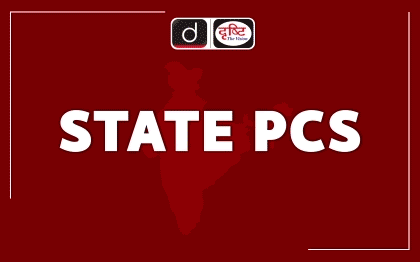
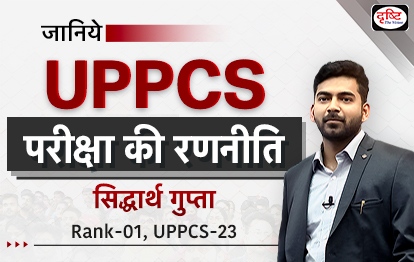

%20MPPCS%202025%20Desktop%20E.jpg)
%20MPPCS%202025%20Mobile%20E%20(1).jpg)

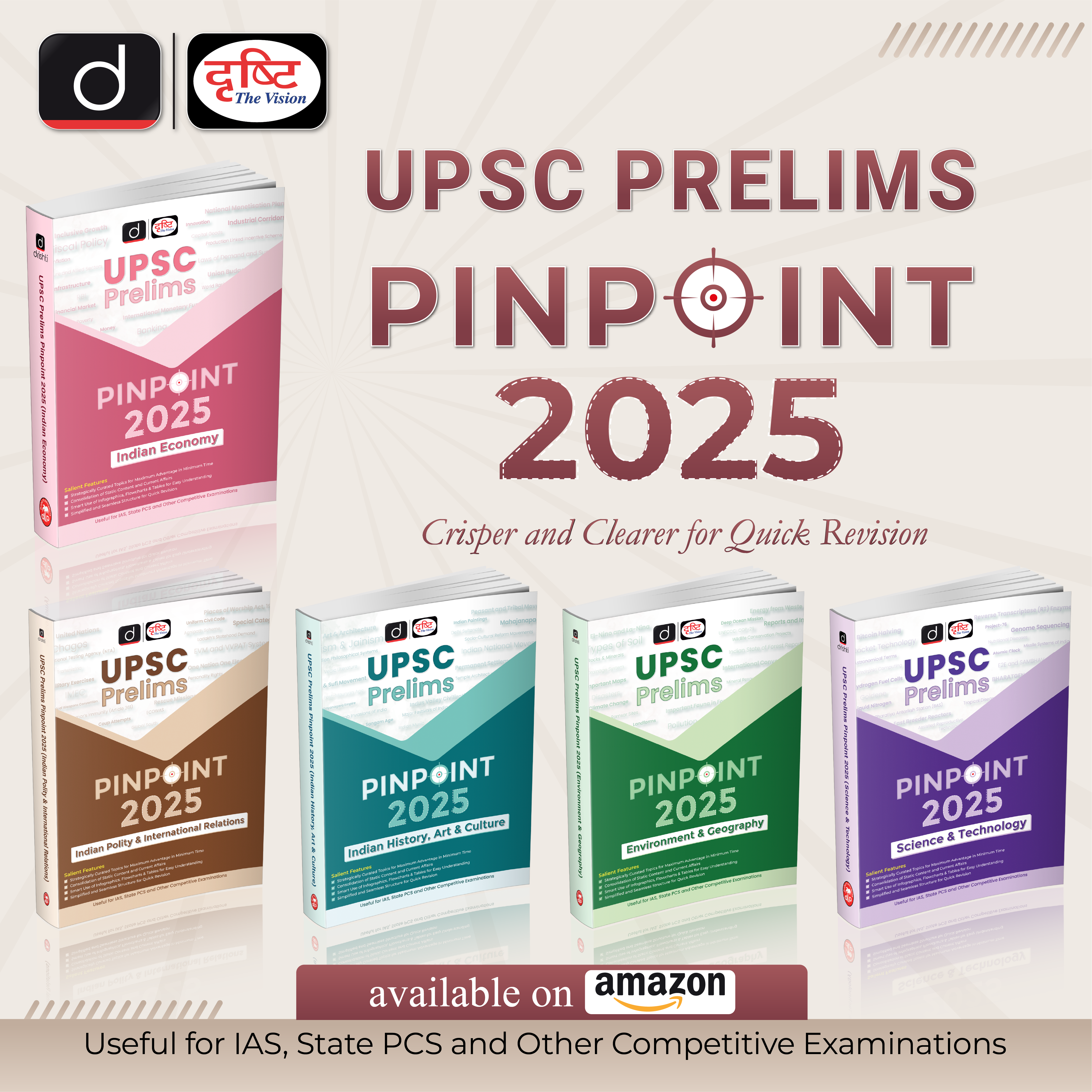







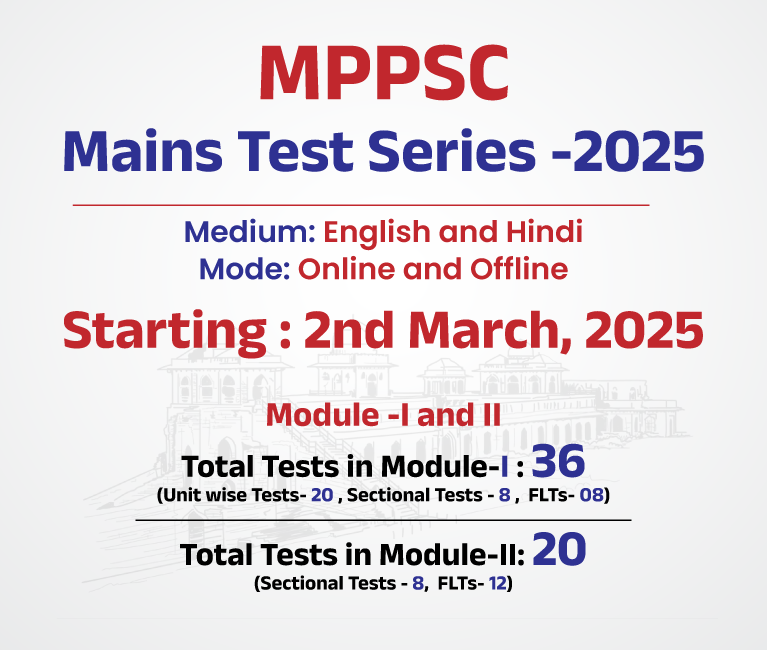
.png)
.png)





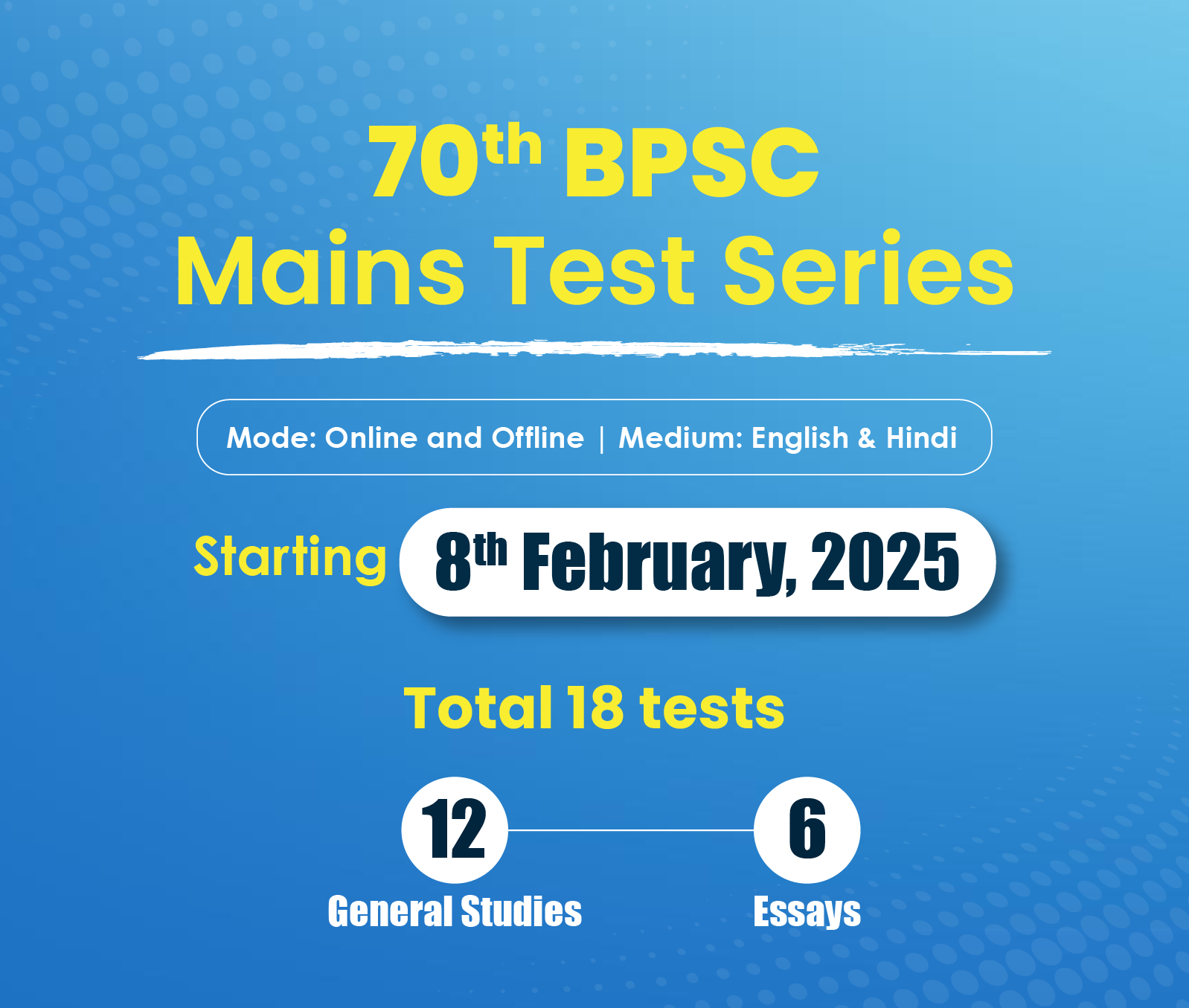





 PCS Parikshan
PCS Parikshan